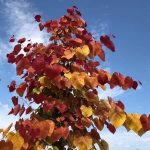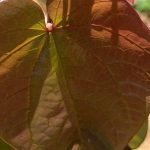The Beauty of Redbud Trees: A Native Treasure for Your Landscape
If you’re looking for a tree that brings year-round beauty, attracts pollinators, and enhances your landscape with vibrant color, look no further than the redbud tree (Cercis canadensis). Native to North America, redbuds are a beloved feature in gardens and natural landscapes, offering stunning spring blooms, striking foliage, and an elegant branching structure that adds interest in every season. Whether you want a statement tree in your front yard, a companion for other plantings, or a shade-loving understory tree, the redbud is a perfect choice.
Why Redbuds Are a Must-Have for Your Landscape
Redbuds aren’t just beautiful—they’re also practical, hardy, and beneficial to local ecosystems. Here’s why these trees are such a fantastic addition to any yard:
1. Native Beauty That Thrives
As a tree native to North America, the redbud is well adapted to local climates, making it a low-maintenance choice for homeowners. It thrives in USDA Hardiness Zones 4-9, meaning it can withstand a wide range of temperatures and growing conditions. Unlike some exotic ornamental trees that require special care, redbuds naturally fit into the environment, blending seamlessly with other native plants.
2. Early Spring Blooms That Steal the Show
One of the most enchanting features of the redbud is its early spring bloom. Before the leaves even appear, the tree bursts into life with clusters of tiny, vibrant pink to lavender flowers that cling to its branches, creating a breathtaking display. These blossoms often appear in late March to April, providing one of the first signs of spring and offering much-needed nectar for pollinators like bees and butterflies.
3. Stunning Foliage Throughout the Seasons
After the flowers fade, the heart-shaped leaves of the redbud emerge in shades of green, purple, or even gold, depending on the variety. Throughout summer, the foliage provides lush greenery, and in fall, it turns brilliant shades of yellow, orange, or red, adding a warm, glowing effect to your landscape. With varieties like Flame Thrower® and Carolina Sweetheart®, you can enjoy multi-colored leaves that change throughout the seasons, offering constant visual interest.
4. A Natural Solution for Small and Large Spaces
Redbuds are an excellent choice for both large yards and compact gardens. They typically grow between 15 to 25 feet tall with an elegant, spreading canopy, making them a perfect medium-sized tree. Smaller weeping varieties like Ruby Falls or Pink Heartbreaker™ provide all the charm of a redbud in a compact form, ideal for small gardens or patio areas.
5. Supports Wildlife and Biodiversity
As a native tree, the redbud plays a vital role in supporting local wildlife. In addition to providing nectar for pollinators, the tree’s seeds are a food source for birds like cardinals and finches. Its branches also offer shelter for small wildlife, and its roots help stabilize soil, reducing erosion in your yard.
How to Design with Redbuds in Your Landscape
Whether you want to create a show-stopping front yard display or an intimate backyard retreat, redbuds offer endless design possibilities. Here’s how to use them effectively in your landscape:
1. Make It a Focal Point
Redbuds shine as a statement tree, particularly when planted near entryways, patios, or in a front yard garden bed. Their graceful, spreading form and brilliant blooms make them a natural focal point, drawing attention in early spring. Plant a single redbud in an open space where its structure can be fully appreciated year-round.
2. Pair with Other Native Plants
Since redbuds are native to North America, they pair beautifully with other native shrubs and perennials. Consider planting them alongside:
- Dogwoods (Cornus florida) for a layered bloom effect in spring
- Fothergilla for rich fall color contrast
- Black-eyed Susans (Rudbeckia hirta) and Coneflowers (Echinacea) to enhance pollinator attraction
- Ferns and Coralbells if planting in a shaded understory area
This type of planting not only creates a natural, harmonious look but also supports local wildlife.
3. Use in Woodland or Shade Gardens
Redbuds thrive as understory trees, meaning they grow well beneath taller trees like oaks or maples. If you have a partially shaded yard, redbuds are an excellent choice to add color and texture without requiring full sun.
4. Plant in Groups for a Dramatic Effect
While a single redbud is stunning, planting them in clusters of three or more creates a more naturalistic and impactful look. This works beautifully along woodland edges, driveways, or in larger garden beds where their layered blooms create a magical springtime scene.
5. Try a Weeping Variety for Unique Elegance
Weeping redbuds like Ruby Falls or Pink Heartbreaker™ add a touch of drama and elegance with their cascading branches. These are perfect for small spaces or as specimen trees near patios or water features, where their graceful form can be fully appreciated.
Caring for Your Redbud Tree
Planting Tips
- Choose a location with full sun to partial shade (redbuds bloom best with at least 6 hours of sunlight).
- Ensure well-draining soil to prevent root rot. We Highly recommend mixing Pine Bark Mulch into the planting hole at a rate of 25-45% mixed with organic soil and native soil. Drainage is imperative to these native trees.
- Dig a hole twice as wide as the root ball but no deeper than the root ball itself.
Watering & Maintenance
- Water regularly during the first year to establish strong roots.
- Once mature, redbuds are fairly drought-tolerant but benefit from occasional deep watering.
- Apply a layer of mulch around the base to retain moisture and regulate soil temperature.
Pruning & Shaping
- Prune in late winter or early spring to remove dead or crossing branches.
- Avoid heavy pruning, as redbuds naturally develop a beautiful shape.
Bring the Beauty of Redbuds to Your Home
With their breathtaking spring blooms, stunning foliage, and easy-care nature, redbuds are one of the best trees you can plant in your landscape. Whether you choose a classic variety like Forest Pansy or a unique color-changing type like Flame Thrower®, these trees add year-round charm and ecological benefits to your home garden.
At D.R. Snell Nursery, we offer a wide selection of redbud trees, from traditional favorites to new and exciting varieties. Our team can help you select the perfect redbud for your yard and provide expert advice on planting and care.
Stop by today and discover how a redbud tree can transform your landscape into a vibrant, nature-friendly retreat!






 contrast. Its compact size makes it a great choice for smaller gardens or urban settings.
contrast. Its compact size makes it a great choice for smaller gardens or urban settings.
 green, and gold, ensuring year-round appeal.
green, and gold, ensuring year-round appeal. purple foliage that matures into a rich green. Its upright growth habit and colorful appeal make it an excellent choice for a focal point in the garden.
purple foliage that matures into a rich green. Its upright growth habit and colorful appeal make it an excellent choice for a focal point in the garden.